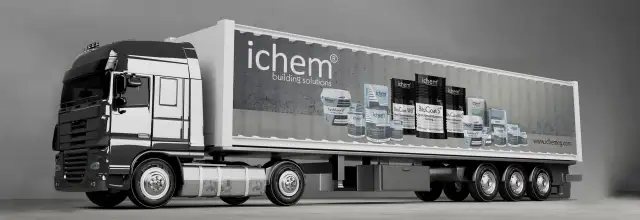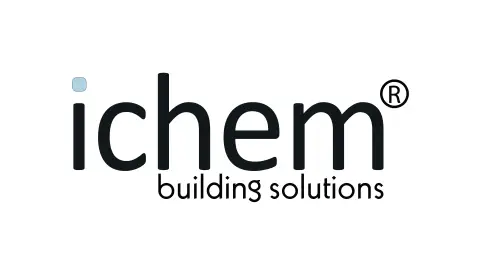
Expansion Joint

Expansion Joint
What are the types of Expansion joints?
Expansion joints are considered to be one of the most crucial elements in structures ‘execution and design. They are being used while building to ensure the structure's longevity and to avoid any damage or cracks that may occur due to expansion, contraction, or any structural movements. These joints play a main role in any architectural design as they maintain the safety & durability of the structure, ensuring its continued performance over time. Expansion joints types vary depending on their purpose & location within any structural design. Some of the most common types are concrete joints, expansion joints, flexible joints, seismic joints, and waterproofing joints. Each of these types has its unique & effective role during the construction phase, and now we will discuss more details & functionalities of each type in depth.
Types of Expansion Joints
Expansion Joints: Expansion joints are one of the most important types of expansion joints that are widely used, especially in large-scale projects like high-rise buildings & highways. The main purpose of using these joints is to allow any structural entity to expand & contract smoothly, especially when exposed to any thermal or physical changes without causing any damage to it like cracks or fractures. Expansion joints are designed by using high-flexible materials to absorb changes, such as strong insulation materials or synthetic rubber. Additionally, these joints are used on tiled walls & building surfaces to ensure its durability & longevity. These joints reflect the practical application of advanced technology in the expansion world through using modern insulation systems that prevent water leakage & enhance the efficiency of structures.
Seismic Joints: Seismic joints play an important role in protecting any building or structural framework in seismically active regions. They help in the reduction of earthquakes' impact on structures by allowing them to move stably during seismic activity. Seismic joints work as defense systems by minimizing the effect of seismic vibrations between different parts of the building, which reduces its damage and so protects the building’s infrastructure. These joints are specially designed with highly flexible & insulating materials to absorb any seismic energy without causing damage to other structural elements. Seismic joints are commonly used in high-rise buildings to provide an additional level of safety.
Metal Joints: Metal joints are known for their durability, strength, and high resistance to all environmental factors, such as corrosion or moisture. These joints are mainly used in architectural designs to enhance the safety & stability of structural elements in the long term. Durable alloys along with water- and rust-resistant properties work together to maintain their high performance even within harsh environmental conditions.
Concrete Joints: Concrete joints are mainly used in construction projects to make sure that any structural frame stands still without any movements out of expansion or contraction. These concrete joints are usually installed in large warehouse floors & pavements to distribute pressure evenly and provide effective insulation against water or moisture seepage, which enhances the building's performance.
Flexible Joints: Flexible joints are a type of joint that are used to provide high flexibility within various structures. They adapt to any movement resulting from thermal expansion or contraction, as well as any vibrations caused by earthquakes. These joints are mainly used in seismic active areas, as they require high resistance to cracks & fractures. Therefore, flexible joints are made of polymeric or rubber materials to ensure its durability against wear & environmental factors. This type of joint is considered to be the ideal solution to achieve a balance between structural safety & sustainability.
Movement Joints: Movement joints are specifically designed to allow any structural element movements within a building without affecting the overall integrity of the structure. This type of joint is one of the most essential ones to be used in high-rise buildings or those exposed to strong winds & severe storms on a regular basis. Because of these joints, structures can withstand any changes caused by internal or external forces while maintaining their safety. They are used to protect buildings against water leakage or to minimize vibrations and noise levels
Expansion Joint Systems
Expansion joints’ design & application are both carried out by using advanced technologies to ensure their efficiency within many conditions. Its perfect system is selected based on the project's nature and its engineering requirements, whether it requires installation or surface insulation. Because of modern technology, creative solutions are being applied to ensure the performance & long lifespan of structural joints. Therefore, the types of expansion joints vary depending on their installation location, usage, project requirements, and environmental conditions, which may include the following:
Tiled Surface Joints: Tiled surface joints are used to ensure the stability of tiled surfaces and maintain their good appearance & strength over time. This type of joint absorbs movements that result from thermal changes or mechanical pressure to prevent cracks in the tiles. Tiled joints are typically made from flexible & insulating materials such as silicone or synthetic rubber to provide anti-corrosion and waterproof properties. Their use in high-moisture areas like kitchens and bathrooms enhances the durability of the tiles and prevents water accumulation beneath the surfaces.
Wall Joints: Wall joints are an important element for any tall vertical structure as it enable it to adapt to changes caused by thermal expansion or contraction, which helps reduce the chances of cracks or fractures. These joints also improve the building's efficiency by providing soundproofing & thermal insulation. The materials used to manufacture wall joints are determined by the nature of the project and may include rubber or polymer materials to ensure the required flexibility.
Floor Joints: Floor joints are an integral part of any floor design to avoid any deformation caused by excessive pressure. This type of joint is widely used in commercial buildings, warehouses, and factories to distribute stress evenly & maintain structural integrity. The main advantage of using these joints is their ability to resist corrosion & water leakage while maintaining the design. Floor joints are typically manufactured using either metal or rubber.
Joints in High-Rise Buildings: A defining characteristic of joints in high-rise buildings is their ability to provide the necessary flexibility for the structure to resist stress against strong winds, storms, or heavy loads. These joints allow the building to absorb seismic movements, thermal expansion, or other external forces. They are constructed using advanced materials designed to resist chemical impacts and ensure long-term durability.
Waterproof Joints: Waterproof joints are used in areas with constant water exposure, such as tunnels, reservoirs, and swimming pools. They are manufactured from sealing & leak-resistant materials like synthetic rubber or polyurethane. These joints prevent moisture or water infiltration into the structure. This enhances the durability and strength of the building, making it an ideal choice for all types of infrastructure projects.
Summary
iChem company manufactures expansion joints that play an essential role in the safety & efficiency of various structures, such as warehouses, high-rise buildings, & even infrastructure projects requiring water insulation. By applying modern & advanced technologies in the manufacturing of these joints, they significantly distribute structural loads, enhancing its overall performance, & preventing water leakage or corrosion. With constant technology in joints, they ensure sustainability and improve the lifespan of structure engineering, which enables them to confront any condition. This makes expansion joints an irreplaceable element in any civil or structural engineering project.



